What Does LANL Ship to WIPP—Legacy or Newly-Generated Transuranic Waste?
![]() On Wednesday, November 16th, during the first virtual and in-person public hearing session, the Defense Nuclear Facilities Safety Board will hear from three Los Alamos National Laboratory (LANL) officials about the stored and buried transuranic waste at the Area G dump.
On Wednesday, November 16th, during the first virtual and in-person public hearing session, the Defense Nuclear Facilities Safety Board will hear from three Los Alamos National Laboratory (LANL) officials about the stored and buried transuranic waste at the Area G dump. ![]() The second and third public hearing sessions will focus on the national security missions and nuclear safety posture, and improving safety systems, safety management programs, and oversight, respectively. The fourth public hearing session will focus on public comments and wrap-up. https://www.dnfsb.gov/sites/default/files/meeting/November%2016%2C%202022%20Hearing%20Agenda_1.pdf
The second and third public hearing sessions will focus on the national security missions and nuclear safety posture, and improving safety systems, safety management programs, and oversight, respectively. The fourth public hearing session will focus on public comments and wrap-up. https://www.dnfsb.gov/sites/default/files/meeting/November%2016%2C%202022%20Hearing%20Agenda_1.pdf
In the first session, the Board wants to understand LANL’s plans to “remove legacy transuranic waste while minimizing the amount of aboveground transuranic waste.” Let’s break down that description.
![]() Legacy transuranic waste is plutonium-contaminated waste from the production of nuclear weapons that was generated prior to 1999, when the Waste Isolation Pilot Plant (WIPP) opened. Area G legacy waste is buried in containers in unlined pits, trenches and shafts carved out of the volcanic tuff. Legacy waste is also stored in containers above ground in fabric tents. None of it is in safe long-term storage.
Legacy transuranic waste is plutonium-contaminated waste from the production of nuclear weapons that was generated prior to 1999, when the Waste Isolation Pilot Plant (WIPP) opened. Area G legacy waste is buried in containers in unlined pits, trenches and shafts carved out of the volcanic tuff. Legacy waste is also stored in containers above ground in fabric tents. None of it is in safe long-term storage.
There are two possible meanings of the phrase, “minimizing the amount of aboveground transuranic waste.” One is minimizing the legacy waste stored in the tents that is destined for deep underground disposal in WIPP. The other is minimizing the newly-generated plutonium-contaminated waste from the fabrication of the triggers, or pits, of nuclear weapons. The choice of meanings is important.
The legacy waste aboveground is prepared for shipment to WIPP under the auspices of Environmental Management Los Alamos, or EM-LA. The amount of legacy waste shipped to WIPP is publicly reported.
But the facts about the newly-generated waste are harder, if not impossible, to come by. The National Nuclear Security Administration (NNSA) operates the plutonium pit fabrication activities. 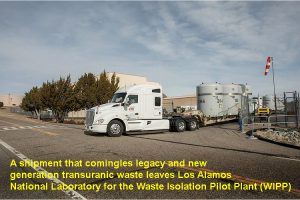
In January 2021, NNSA and EM-LA decided that for efficiency they would commingle their waste shipments to WIPP. https://n3b-la.com/n3b-and-triad-cooperate-to-ship-radioactive-waste-to-wipp/
Since October 3rd, 2022, CCNS has been asking for the commingled shipment data for fiscal year 2022. EM-LA does not have that data, even though one of its contractors, N3B, stated that all of the waste shipped in fiscal year 2022 was legacy waste. https://n3b-la.com/n3b-exceeds-legacy-waste-shipment-goals-for-fy22/
There are efforts to get the waste off the hill, but what waste? Since there is limited space at WIPP, disposal of legacy waste must be the priority.
The public needs easy access to all of the shipment data and so does the Defense Nuclear Facilities Safety Board. Please bring your questions and concerns to the hearing. Public comments will be heard from 2 to 2:30 pm and from 8:45 to 9:25 pm.
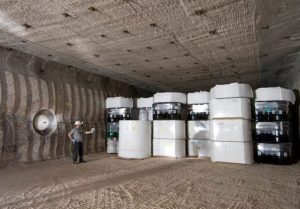 If you are interested in making comments, please pre-register by close of business on Friday, November 11, 2022. Please follow the instructions in the Federal Register notice – which is cut and pasted below:
If you are interested in making comments, please pre-register by close of business on Friday, November 11, 2022. Please follow the instructions in the Federal Register notice – which is cut and pasted below:
Persons interested in speaking during the public comment portion of the Public Hearing are encouraged to pre-register by submitting a request in writing to the Office of General Counsel at 625 Indiana Avenue NW, Suite 700, Washington, DC 20004, emailing hearing@dnfsb.gov , or calling (202) 694–7062 or (800) 788–4016 prior to close of business on November 11, 2022. DNFSB asks that commenters describe the nature and scope of their oral presentations.
Those who pre-register will be scheduled to speak first. Individual oral comments may be limited by the time available, depending on the number of persons who register. At the beginning of the hearing, a list of speakers will be posted at the entrance to the hearing room. Anyone who wishes to comment or provide technical information or data may do so in writing, either in lieu of, or in addition to, making an oral presentation. The Board Members may question presenters to the extent deemed appropriate. Written comments and documents will be accepted at the hearing or may be sent to DNFSB’s Washington, DC office. DNFSB will hold the hearing record open until December 16, 2022, for the receipt of additional materials. Additional details, including the detailed agenda for the hearing, are available at https://www.dnfsb.gov . https://www.dnfsb.gov/sites/default/files/meeting/Federal%20Register%20Notice_12.pdf
Helpful tips to help you prepare your public comments
If you are interested in making public comments but don’t know where to start or what topic to cover, check out the weekly one-page Resident Inspector Reports for LANL on the DNFSB website. https://www.dnfsb.gov/ Read one or two of three of them. For example, the Oct. 14, 2022 report covers electrical safety, criticality safety and on-site transportation – all topics that will be discussed during the Nov. 16, 2022 public hearing. https://www.dnfsb.gov/sites/default/files/document/26846/Los%20Alamos%20Week%20Ending%20October%2014%202022.pdf
If a topic peaks your interest, follow the thread on the websites of the DNFSB at https://www.dnfsb.gov/ , CCNS at http://nuclearactive.org/ , Nuclear Watch New Mexico at https://nukewatch.org/ , Honor Our Pueblo Existence (HOPE) at https://shuffle.do/projects/honor-our-pueblo-existance-h-o-p-e , and Tewa Women United (TWU) at https://tewawomenunited.org/?s=LANL
- Friday, November 11th from noon to 1 pm – Armistice Day –
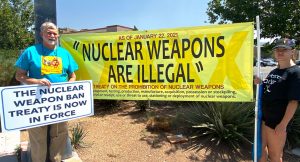 Join the weekly peaceful protest for nuclear disarmament on the corners of Alameda and Guadalupe in downtown Santa Fe with Veterans for Peace, CCNS, Nuclear Watch NM, Loretto Community, Pax Christi and others. Join us about next steps toward nuclear disarmament.
Join the weekly peaceful protest for nuclear disarmament on the corners of Alameda and Guadalupe in downtown Santa Fe with Veterans for Peace, CCNS, Nuclear Watch NM, Loretto Community, Pax Christi and others. Join us about next steps toward nuclear disarmament.
- Monday, November 14th from 9 am to 5 pm –
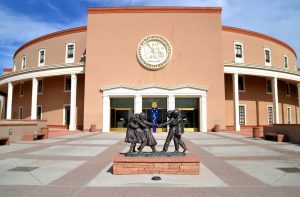 virtual and in-person Radioactive & Hazardous Materials Committee public meeting at the State Capitol, Room 309, Santa Fe. A primary focus is LANL. Presentations about the proposed Green Amendment, Uranium Mining Legacy Cleanup, Legacy Environmental Cleanup at LANL, Update from LANL, Discussion Topics Concerning LANL, and Increasing Penalties for Violations of Environmental Statutes. Public comments are scheduled for 4:30 pm. To make virtual public comments, please see https://www.nmlegis.gov/agendas/RHMCageNov14.22.pdf
virtual and in-person Radioactive & Hazardous Materials Committee public meeting at the State Capitol, Room 309, Santa Fe. A primary focus is LANL. Presentations about the proposed Green Amendment, Uranium Mining Legacy Cleanup, Legacy Environmental Cleanup at LANL, Update from LANL, Discussion Topics Concerning LANL, and Increasing Penalties for Violations of Environmental Statutes. Public comments are scheduled for 4:30 pm. To make virtual public comments, please see https://www.nmlegis.gov/agendas/RHMCageNov14.22.pdf
- Monday, November 14th from 4:30 to 5:30 pm MT –
 virtual training for LANL’s Electronic Public Reading Room (EPRR). https://permalink.lanl.gov/object/tr?what=info:lanl-repo/lareport/LA-UR-22-30217 The EPRR is an information repository for administrative and environmental information and correspondence as required by Section 1.10 of the 2010 NM Environment Department Hazardous Waste Facility Permit for LANL. The EPRR is available at https://eprr.lanl.gov/
virtual training for LANL’s Electronic Public Reading Room (EPRR). https://permalink.lanl.gov/object/tr?what=info:lanl-repo/lareport/LA-UR-22-30217 The EPRR is an information repository for administrative and environmental information and correspondence as required by Section 1.10 of the 2010 NM Environment Department Hazardous Waste Facility Permit for LANL. The EPRR is available at https://eprr.lanl.gov/
When it is time to join the meeting:
WebEx Link: https://lanl‐us.webex.com/lanl‐us/j.php?MTID=m8a5939de8afadbcbb5a5bedeb3c8c4d5
Meeting No.: 2463 136 2821
Video address: 24631362821@lanl‐us.webex.com
PIN: EPRR‐Train
Call In No.: 1‐415‐655‐0002
Call Access No.: 2463 136 2821 then press # to confirm and enter the meeting
- Tuesday, November 15th at 10 to 11 am Mountain Time –
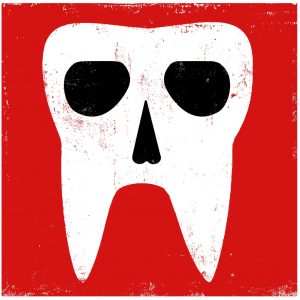 Radiation and Public Health Project Annual Meeting – The Baby Teeth Project. https://radiation.org/research-using-100000-baby-teeth-begins/ The Radiation and Public Health Project (RPHP) research and education group is working with a group of independent scientific advisors to on a landmark research project that will soon analyze over 100,000 baby teeth that remain from a 1960s study and have been donated to RPHP. Fallout remaining in teeth from above-ground atomic bomb tests still can be measured, providing a unique opportunity to assess health impact from past exposures. In addition, RPHP is collecting baby teeth from children now living near nuclear reactors, which produce the same toxic chemicals as did atomic bombs. This research is one of a kind opportunity to better understand two critical health questions:
Radiation and Public Health Project Annual Meeting – The Baby Teeth Project. https://radiation.org/research-using-100000-baby-teeth-begins/ The Radiation and Public Health Project (RPHP) research and education group is working with a group of independent scientific advisors to on a landmark research project that will soon analyze over 100,000 baby teeth that remain from a 1960s study and have been donated to RPHP. Fallout remaining in teeth from above-ground atomic bomb tests still can be measured, providing a unique opportunity to assess health impact from past exposures. In addition, RPHP is collecting baby teeth from children now living near nuclear reactors, which produce the same toxic chemicals as did atomic bombs. This research is one of a kind opportunity to better understand two critical health questions:
1. Whether fallout raised cancer risk to Baby Boomers, now in their 60s
2. If children near nuclear reactors can expect to face cancer risk later in life similar to Baby Boomers
No other research organization in the U.S. is studying health hazards from fallout or reactor exposures, using actual in-body measurements.
As we consider future energy choices in a climate constrained world, better understanding long-term impacts of radiation exposure is an essential data point that is largely being ignored. RPHP is filling this gap by using the 100,000 teeth to understand past risk, and predict future risk.
Join Zoom Meeting – https://us02web.zoom.us/j/83987181239?pwd=dkF0alBybkovQm5JSDdKckkvYjdTUT09#success
Meeting ID: 839 8718 1239
Passcode: RPHP
One tap mobile
+13017158592,,83987181239#,,,,*526912# US (Washington DC)
+13126266799,,83987181239#,,,,*526912# US (Chicago)
Dial by your location
+1 301 715 8592 US (Washington DC)
+1 312 626 6799 US (Chicago)
+1 929 205 6099 US (New York)
+1 346 248 7799 US (Houston)
+1 669 900 6833 US (San Jose)
+1 253 215 8782 US (Tacoma)
Meeting ID: 839 8718 1239
Passcode: 526912
Find your local number: https://us02web.zoom.us/u/ksEsVQzKF
- Wednesday, November 16, 2022 –
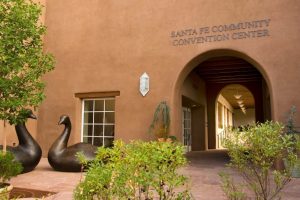 virtual and in-person meeting of the Defense Nuclear Facilities Safety Board from noon to 9:45 pm – with two breaks – at the Santa Fe Community Convention Center. The two breaks are from 2:30 pm to 4 pm, and from 6 pm to 6:30 pm. https://www.dnfsb.gov/public-hearings-meetings/november-16-2022-public-hearing and http://nuclearactive.org/defense-nuclear-facilities-safety-board-to-hold-public-hearing-at-santa-fe-convention-center-on-november-16th/
virtual and in-person meeting of the Defense Nuclear Facilities Safety Board from noon to 9:45 pm – with two breaks – at the Santa Fe Community Convention Center. The two breaks are from 2:30 pm to 4 pm, and from 6 pm to 6:30 pm. https://www.dnfsb.gov/public-hearings-meetings/november-16-2022-public-hearing and http://nuclearactive.org/defense-nuclear-facilities-safety-board-to-hold-public-hearing-at-santa-fe-convention-center-on-november-16th/
Tags: Area G, commingle waste shipments, Defense Nuclear Facilities Safety Board, DNFSB, Environmental Management Los Alamos, LA-EM, LANL, legacy transuranic waste, Los Alamos National Laboratory, National Nuclear Security Administration, newly-generated transuranic waste, NNSA, nuclear weapons, plutonium pit production, plutonium-contaminated waste, public comments, public hearing, Resident Inspector Reports, triggers















Comments
No comments so far.